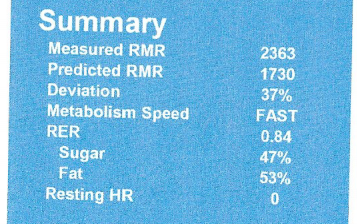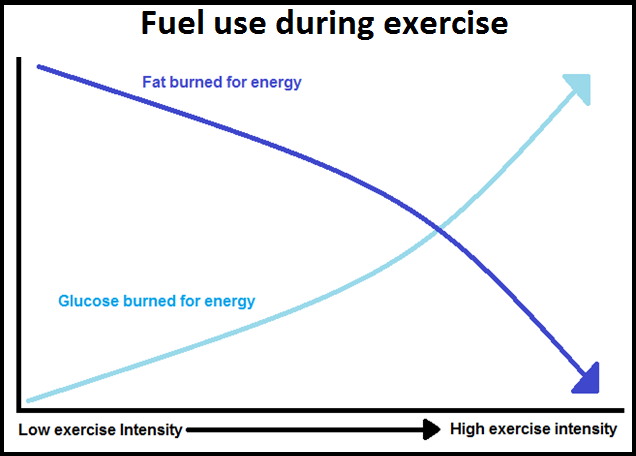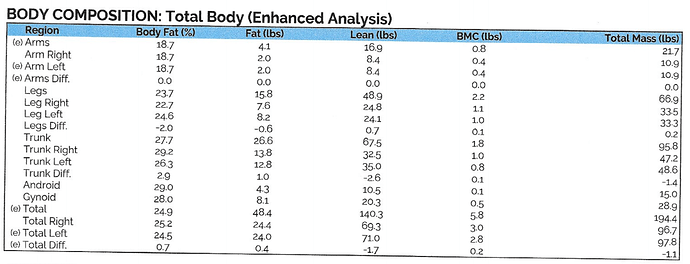I’m really trying to avoid supplements these days (aside from electrolytes as needed). I feel like they’re mostly poorly absorbed by our bodies, and can be expensive when you add them up. The leucine sounds interesting, though. What is it used for?
Karim's Extended Fast Tracker - come along for the ride
The permanent damage is due to caloric restriction, not fasting.
fasting = no food = burning fat predominately with some lean loss.
caloric restriction = some food, usually high carb = high lean mass loss with fat
the difference is in the remaining lean mass at the end. metabolic rate is a function of lean mass (he says so in the beginning too). So that’s why I’m so focused on retaining my lean mass.
ketogenic eating and fasting both preserve a lot of lean mass compared to caloric restriction.
That’s why that study on the biggest loser doesn’t apply. Dr Fung says the exact same thing in his vids and books.
Leucine is the most anabolic branch chain amino acid. It basically sends the signal to the muscles to grow through mToR signaling (think of it as a switch to make muscle) and is a large component of hemoglobin. It’s also an essential amino acid = our bodies can’t make it. That’s its primary function as well as I understand it.
Phinney’s use of the NIH Biggest Loser Study as a bogeyman was a bit disingenuous at best. He held it up as the worst possible case scenario given continuous calorie restriction and extreme exercise (which incidentally has nothing to do with fasting), but even he conceded that no outcome like that has ever been reported in any of the hundreds of papers published on long term fasting. He says that explicitly starting at 6:10 in the linked vid.
Kind of like saying “We can’t prove spacemen from venus have not been controlling us through our cats, therefore we should not own them!!!” It’s a cheap trick, and hardly rises to the level of logical fallacy, but it still makes you look at your cat funny.
With regards to the Biggest Loser Study though, it was a little more than the lean mass loss. What happened to them is something called adaptive thermogenesis aka metabolic adaptation. Essentially, not all of the drop in their RMR was attributable to their loss of lean mass, and even more disconcerting, their RMR did not increase when lean mass was regained. In fact even after they regained their hundreds of pounds, their RMR continued to decline. That show destroyed those peoples metabolisms and their lives.
Reading that article was what got me obsessed with RMR, and fasting, and convinced me that continuous calorie restriction coupled with exercise is crazy. The article is well worth reading.
interesting… even more validation that CICO is garbage self destructive dieting.
The best source of Leucine in meats and eggs, but I made a veggie list too…
| food | Leucine (g) | per |
|---|---|---|
| Hemp seeds | 3.46 | cup |
| Chia seeds | 2.19 | cup |
| Sesame seeds | 1.96 | cup |
| Almonds | 1.59 | cup |
| Brazil nut | 1.58 | cup |
| Walnut | 1.37 | cup |
| Lentils | 1.30 | cup |
| Chickpeas | 1.04 | cup |
| Pumpkin seeds | 1.01 | cup |
| Lima beans | 0.91 | cup |
| Spinach | 0.76 | bunch |
| Swiss chard | 0.62 | 10 leaves |
went back to look at Phinney’s presentation and I think the loss of “lean mass” for more overweight fasters is associated with more connective tissue that the body should jettison as it loses the fat. It’s not that the fat isn’t protective. It’s that the fat required a lean mass “structure” that become unnecessary as the fat was lost.
This goes back to my open question on the definition of “lean mass”… what is it and how do we separate “lean mass” from “muscle mass”. Muscle mass is the dominant driver of metabolic rate. The rest is relevant, but not the most impactful.
Also - I have to admit - nothing is more effective at fighting the fasting chills than intense exercise, sauna and UV…
It really is an interesting question. I don’t think anybody has bothered to analyze the percentage of the lean mass loss that is muscle vs connective tissue vs skin vs bone. It seems like a pretty basic question, but despite the hundreds of studies published annually, I’m not aware of anyone who explains what “lean mass loss” or “lean mass gain” actually means in their study. It’s kind of weird really.
If you’re analyzing urine to estimate lean mass loss in a metabolic ward, it just seems like there would be some way to flag whether some of it was muscle somehow.
DEXA shows lean mass distribution, so maybe I’ll be able to see a difference between abdominal lean mass vs. arms, chest, legs, etc… The assumption may be that abdominal lean mass is more associated with sustaining the belly fat?
Let me see what I can extract and share here.
Here’s what I got on March 1st, 2019:

So I think I might be able to discern the bone mass (BMC) from the lean as well as the distribution across regions. I’ll have to import it into excel to run the comparison.
The fact that you’re so deep into the fast, and so comparatively dehydrated might skew the results a bit. You can add 10lbs lean mass to your Dexa scan in 72hrs just by quitting keto, carbing up, and hitting the creatine. It doesn’t differentiate between muscle tissue and retained water. If you’re retaining water in your abs, but not your pecs the DEXA will show it as a loss in one place but not the other (I dunno why that would happen, just an example). I’ve read that the only way to fully compare apples to apples is to be at the same level of hydration for both tests.
The RER reading is crazy! Were you feasting, fasting, or keto vacationing during that test? How the heck did they get .84? I’ll be interested to see what it measures your RER at next time. I’ve read that folks on keto, and particularly people deep into fasts get completely wacky RER readings like that sometimes. Do me a favor and get the name of the metabolic cart model their using. My new toy measures RER and I’m curious if it’s the same model they use at Dexafit. I’m using a Korr CardioCoach CO2.
I was never out of keto. Around the time of the test, my ketones were between 0.3 and 0.8 and glucose was never over 85. It’s not the same as deep fasting, but still - not carb or insulin loaded.
I can see the changes between 1 and 3 for the impact of deep ketosis and hydration. The DEXA can hopefully let me know if my projection of metabolic rate, weight and bf% are correct.
Also, I was dry fasted all day until the test at 4pm … so not much cheating going on with hydration.
Notice that they break down lean mass into bone and not-bone… interesting to see if that changes too.
I had a mask that I would breathe in and out of… it had probes that would measure oxygen and carbon dioxide with each breath.
Interesting video. I wish he would have done more of a deep dive into the paper, because it’s behind a paywall. I don’t doubt that ketones are muscle sparing, it makes sense that they would be, but there’s no denying the studies that measure nitrogen balance in the urine that quantify precisely how much protein is catabolized during extended fasting. It goes back to your question of “where the heck does it all come from?”.
I’m guessing the paper makes an interesting case that bed ridden patients who are experiencing muscle atrophy can benefit therapeutically from a ketogenic diet relative to SAD, but when it comes to full blown extended fasting, a ketogenic diet has always been the only option.
A couple of interesting points that I also got…
first, ketones inhibit adipose oxidation… basically, there’s a feedback loop that stops ketones from blowing up… if there are high levels of ketones, the body burns LESS fat… and also burns less lean mass…
this is interesting. When I lift, sauna, UV and ice bath… my ketones drop due to energy consumption. This actually reduces the threshold for additional fat oxidation and creates more fat loss and more ketone to “refill the ketone tank”.
second, fat oxidation breaks down lipids into the glycerol backbone and fatty acids. The glycerol gets converted to glucose and glycogen, and the fatty acids get converted to ketones. So… every time ketones are generated, the glycerol backbone is also release and feeds glucose to replenish glycogen and blood glucose (for the brain). I’ve known this in the back of my mind but he brought it back to the forefront.
So… putting the two together… it’s not just fasting. It’s fasting and then consuming the ketones to allow the release of additional ketones and glucose from the lipids that keeps the machine burning more fat. If sufficient lipid oxidation releases glucose, then protein metabolism will diminish… basically, the brain gets it’s cut of the cake and there’s no need to break down muscle tissue in the abundance of glycerol.
That’s “very simplistically” one way that ketone production spares muscle breakdown.
Note that it’s not ketones… it’s ketone production that counts.
Why the distinction? If I’m not consuming ketones, then the amount of ketone production is minimal since it’s only keeping up with my minimum needs. That also means that the amount if glycerol released to feed the brain is equally minimal. So, if that runs low, the body has to go to gluconeogenesis and can start cannibalizing lean mass. However, in a state of high ketone production, there’s plenty of release glycerol… and the brain gets all it needs.
So, my Leucine helps my weightlifting… and that keeps me consuming ketones… and that releases glycerol… that feeds the brain… and spares muscles… I know it’s a weird long chain but it makes sense to me.
Unfortunately, there is another unfortunate deduction… the greatest consumption of ketones is cardio… and I’ve been avoiding it.  I just enjoy lifting so much more. But I can’t spend my life in ice baths and saunas so I’m going to find more ways to consume ketones and that’s going to have to include more cardio… while fasting… yikes.
I just enjoy lifting so much more. But I can’t spend my life in ice baths and saunas so I’m going to find more ways to consume ketones and that’s going to have to include more cardio… while fasting… yikes.
https://perfectketo.com/how-to-exercise-in-ketosis/

At least the Leucine will help, and now… a new phase of the fast begins… one that includes the dreaded cardio… so my brain can get enough glucose to spare my muscles.
No, it kind of makes sense to me. I’m not sure it’s correct, but it’s an interesting thought!
What you you’re suggesting might be plausible, I can’t really wrap my head around it all the way. I don’t think I’ve seen a prolonged fasting study that involved exercise, so who knows. I’ll have to think about that one. I’m not a fan of steady state cardio either, so I kind of hope that’s not the answer lol. 
Day 18… woohoo
Dropped 0.6lbs to 169 with 0.2lbs lean and 0.4lbs fat. So down to 19.8%.
That’s kind of what I expected with 1/3 lean and 2/3 fat loss trend post rehydration with Leucine. It’s only been a few days after resetting, so more learning to go.
I feel good… not needing as much sleep as I did Sunday and Monday. Not really hungry but stomach gurgling comes and goes.
An interesting new change is increasing side pain. This happened back when I first lost a lot of weight from my waist. I do think this is the result of my side fat loss leaving a lot of my upper body stabilization to my core muscles- abs, obliques.
It happens more when I do upper body lifts and my stomach and sides hurt. The fat was literally bracing my rib cage, stomach and sides and holding everything in place. As that dissipates, I actually need to flex my core to hold my body in place to offset the weight.
Another interesting change… the Leucine is giving me a lot more power and intensity in lifting. I’m still not sore which is disappointing. I’m stacking heavier weights and more reps… no change. The only pain is from my torn bicep that is straining under the higher weight. I’m going to try to move to other muscle groups and more cardio.
My focus is to actually lower ketones through different activities to force increased ketone generation.
Tomorrow is a dry fast with DEXA in the afternoon. That’ll be the first formal milestone (day 19) in this fast.
One thing that sometimes happens with rapid weight loss is hernias. There have been a couple people here on the forum that mentioned that when they lost a lot of weight, hernia’s became evident. Apparently when they had a lot of body fat, the fat used to support things and keep everything in place, but when it disappeared the hernia’s became a problem that required surgery. It might be worth researching hernia symptoms and keep a close eye on this. That’s probably not what’s bothering you, but better safe than sorry!
The two gents that I remember talking about this were @Digital_Dave and @CaptainKirk. I think both guys did a fair bit of fasting, lost weight at a pretty good clip, had the hernia symptoms, and got them sorted surgically and are both easing back into the swing of things now. @Digital_Dave and @CaptainKirk, I’m curious to know what you’re first symptoms were and whether the hernias were preventable. This is something I want to keep an eye out for too as someone who lifts weights and is dropping bodyfat surprisingly quickly.
I had hernias before - I was a heavy lifter in college… heavy body and heavy weight.
I also had a hernia when I first started keto and was lifting heavy. It went away non-surgically.
That feels different. Hernia pain for me was “deeper” and much more groin specific.
This is definitely side pain - obliques, abs, and lower back mainly.



